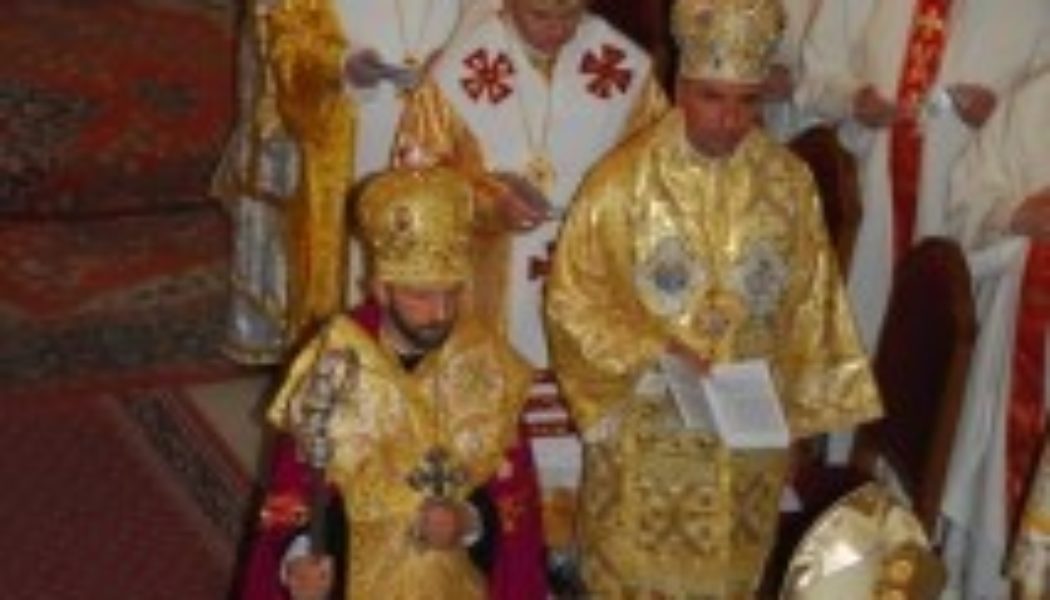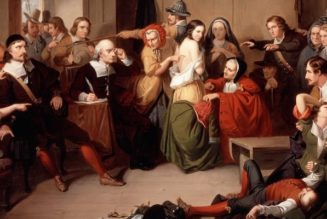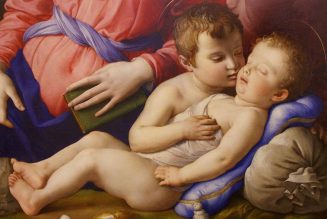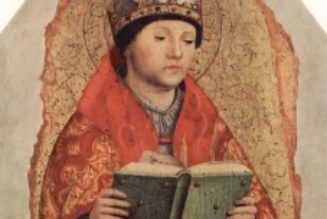I’m continuing with a series of posts that reflect on the relations of East and West in the Church (see the last two on Orthodox saints in the Catholic Church and a fuller timeline of the relations between Latins and Greeks). This one discusses how Catholics should speak of themselves as belonging to Churches, with their distinctive rites, within the Catholic Church.
Churches and Rites

Although we hear it so often, it is not proper to refer to the Church as the Roman Catholic Church. It is simply the Catholic Church, which is a communion of 24 distinct sui juris (self-governing) Churches in communion with one another and all under the primacy of the Pope. It is actually not proper to speak of these Churches as rites, because the rite is the liturgical, theological, spiritual, and governance practices of these Churches, which largely fall into 7 major branches (Latin, Greek, East Syriac, West Syriac, Coptic, and Armenian – with derivations within these families). That means that some of the 24 sui juris Churches use the same rites (for instances there are 14 Churches that use the Byzantine Rite and both Syriac rites are used in India).
The Code Canons of the Eastern Churches, describes the nature of a rite: “Canon 28. A rite is the liturgical, theological, spiritual and disciplinary patrimony, culture and circumstances of history of a distinct people, by which its own manner of living the faith is manifested in each Church sui iuris.” This is distinct from the definition of a Church: “Canon 27. A group of Christian faithful united by a hierarchy according to the norm of law which the supreme authority of the Church expressly or tacitly recognizes as sui iuris.” The numerous churches and rites manifest the rich diversity of the Catholic Church.
Is the Church “Roman”?
The adjective “Roman” has become common in Protestant countries to emphasize the Catholic Church’s connection to the Pope, almost as another way of saying “Papist.” Catholics seem to have taken it on since the largest (by far) of the 24 Churches is the Latin Church, which prays the Roman Rite (although this was not always the case for the entire Western Church). The descriptor “Roman” shows the centrality of the liturgy of the city of Rome for the entire Latin Church and its close association to its Patriarch, the Pope. The “Roman Church” means specifically the church of the city of Rome and is used by extension, though not properly, for the whole Western Church.

There are 23 Churches united to the Latin Church that are neither Latin nor use the Roman Rite, although they are in communion with the Bishop of Rome, the Pope. I often hear Catholics of the Eastern Churches referring to members of the Latin Church (or Latin Rite) as “Romans.” A departed Ruthenian priest friend of mine, however, used to emphasize that the Byzantines were the true Romans after the fall of the Roman Empire in the West, continuing the Empire in East, referring to themselves therefore, as “Romans” and not “Byzantines.”
In Western Europe two major liturgical traditions developed, with the Gallican family of rites (including the Mozarabic and Celtic rites) alongside of the Roman rite (and there is an ongoing debate about whether the Ambrosian Rite should be considered Gallican or Roman). The Carolingians, including Charlemagne, sought to strengthen their ties to the Papacy and to create spiritual unity in their Empire by adopting the Roman Rite. Thus, the worship and chant of the city of Rome became the standard rite of most of Western Europe. St. Pius V, in publishing a new missal in the 16th century, did not abolish ancient rites. Some distinct liturgical rites do remain in the Latin Church, such as the Ambrosian and Mozarabic Rites, which allow for regional distinctions, as well as the distinct rites of some religious orders. The Roman Rite also has multiple “uses,” such as the Anglican Use (building in some ways upon the older Sarum Use) and Zaire Use. We could still make the distinction introduced by Pope Benedict XVI of the extraordinary form (Traditional Latin Mass) and the ordinary form (Mass of Paul VI) of the Roman Rite, although this nomenclature now seems contested.
So how should Catholics speak of themselves and their rites of worship? I’ll use the Catechism and Code of Canon Law to clarify. I would say, for instance, that I am a Catholic, and, if that is not enough, a member of the Latin Church that prays with the Roman Rite. I would never call myself a Roman Catholic or a Roman. When speaking to Easterners, I call myself, rather, a Latin Catholic (as opposed to Byzantine Catholic, for instance).
“Roman” and “Latin” in the Catechism (and the Second Council of Lyon)
The Catechism never speaks of the “Roman Catholic Church.” It speaks simply of the “Catholic Church,” using the term close to 50 times. The same is true of the Code of Canon Law (1983), which never uses the adjective Roman to refer to the Church as a whole but uses the term Catholic Church 25 times.
The word Latin appears 33 times in the Catechism, while Roman appears 105 times (referring to the Roman Catechism, Roman Missal, Roman Liturgy, Roman Pontiff, Roman Canon, Roman Church [only twice], Roman liturgy, Roman Rite, and the Roman Ritual and Pontifical). When using the words Roman Church, it does not seem to signify the whole Western Church, as it speaks of liturgical practices that arose in Rome in contrast to the East, even though those Roman practices spread to the whole West, as seen in this quote: “A custom of the Roman Church facilitated the development of the Western practice” (1291; see also 1383). Paragraph 1059, however, does seem to speak more broadly of the Church as “Roman,” as it quotes the Second Council of Lyons, which speaks of the Roman Church in relation to the Greeks: “The holy Roman Church firmly believes and confesses . . .”
This quote from the 13th century, however, seems to point to the faith of the Church of Rome as as a definitive reference for what must be believed by the entire Church (as St. Irenaeus argued in the 2nd century). Taking another quote from this Council (not referenced in the Catechism), it speaks of the Roman Church in relation to both the tradition of Latin and Greek Fathers, pointing to a distinction between Roman and Latin: “This the holy Roman church, mother and mistress of all the faithful, has till now professed, preached and taught; this she firmly holds, preaches, professes and teaches; this is the unchangeable and true belief of the orthodox fathers and doctors, Latin and Greek alike.” The Council also speaks of the Roman Church directly in relation to the Roman Pontiff, as in the election of a new Pope, narrowing the scope of the term. It also speaks of the “Roman church or any other churches,” indicating that Roman does not refer to the entire Church.

Coming back to the Catechism, it also describes the Church’s various rites: “The liturgical traditions or rites presently in use in the Church are the Latin (principally the Roman rite, but also the rites of certain local churches, such as the Ambrosian rite, or those of certain religious orders) and the Byzantine, Alexandrian or Coptic, Syriac, Armenian, Maronite and Chaldean rites. In “faithful obedience to tradition, the sacred Council declares that Holy Mother Church holds all lawfully recognized rites to be of equal right and dignity, and that she wishes to preserve them in the future and to foster them in every way” (1203). In relation to the West, it speaks of the “Latin liturgy” (246) and “Latin custom” (1307), compares the “Latin and Eastern” rites (1233), and speaks of the sacramental worship of the “Latin Church” (1240).
The Catechism uses the terms “Latin Rite” (6 times) and “Roman Rite” (7 times) nearly equally when speaking of the worship of the Latin Church, and indeed the Roman Rite has become the nearly exclusive rite of the Latin Church.
“Roman” and “Latin” in the Code of Canon Law
Canon Law uses the term “Roman Church” to refer to the Church of Rome, the Pope’s own See. In addition to the Roman Pontiff and the Roman See, it speaks of the Roman Curia, Roman Rota, and Cardinals of the Roman Church, as these refer to institutions which arose surrounding the Pope as Bishop of Rome, even though they have broader significance due to the Pope’s universal role. “Roman” here truly refers to the diocese of Rome and curial offices which support the Pope in his governance of the Church. In canon 437, the Code speaks of the Roman Church in a way that shows it linked to the Pope as Bishop of Rome: “The pallium signifies the power which, in communion with the Roman Church, the Metropolitan possesses by law in his own province.” The Roman Church is seen here as providing a source of communion between metropolitans and bishops throughout the world.
None of the 113 uses of the word “Roman” in Canon Law refer to the entire Church, or even the Western Rite, as Roman. There are no references to the Roman Rite in Canon Law. In terms of the entire Western Church, the word “Latin” is used: “Canon 1. The Canons of this Code concern only the Latin Church.” Most of the 14 uses of the word “Latin” refer to the “Latin Church,” once to the “Latin Rite,” and once to the Latin language. According to Canon Law, the Western Church (as opposed to the Eastern Churches) should refer to itself as “Latin” and not “Roman.”
Concluding Thoughts
The Church of Rome remains an essential point of the reference for the entire Catholic Church in its 24 distinct sui juris Churches. Rome remains a more proximate point of reference for the Latin Church, which has adopted the Roman Rite as its own (with some exceptions). That said, it can be easy for Catholics to associate themselves too closely to Rome, calling themselves Roman Catholics in a way that would deflect from the universality of the Church and overshadow the diversity of her rites.

That the Catechism speaks of the Latin Church reflects a growing consciousness that Latin Rite Catholics are not the whole Church (even if they are the very overwhelming majority). We need greater care when speaking of how the Catholic Church contains a variety of liturgical rites and canonical practices. For instance, does the Catholic Church have married priests? The answer is “yes,” of course, although only ordinarily in most of the Eastern Churches and as an exception in the Latin Church, such as under the pastoral provision for Anglican and Lutheran ministers or in the Anglican Ordinariates. It is too easy and even common to speak of the Latin Church as the Catholic Church as a whole (due to its size), although it may help to guide the Catholic Church through this difficult time to rediscover Eastern traditions and practices. Reclaiming this Eastern patrimony can guide the Church in reclaiming a liturgical and spiritual richness that has been lost in many ways.
Join Our Telegram Group : Salvation & Prosperity









